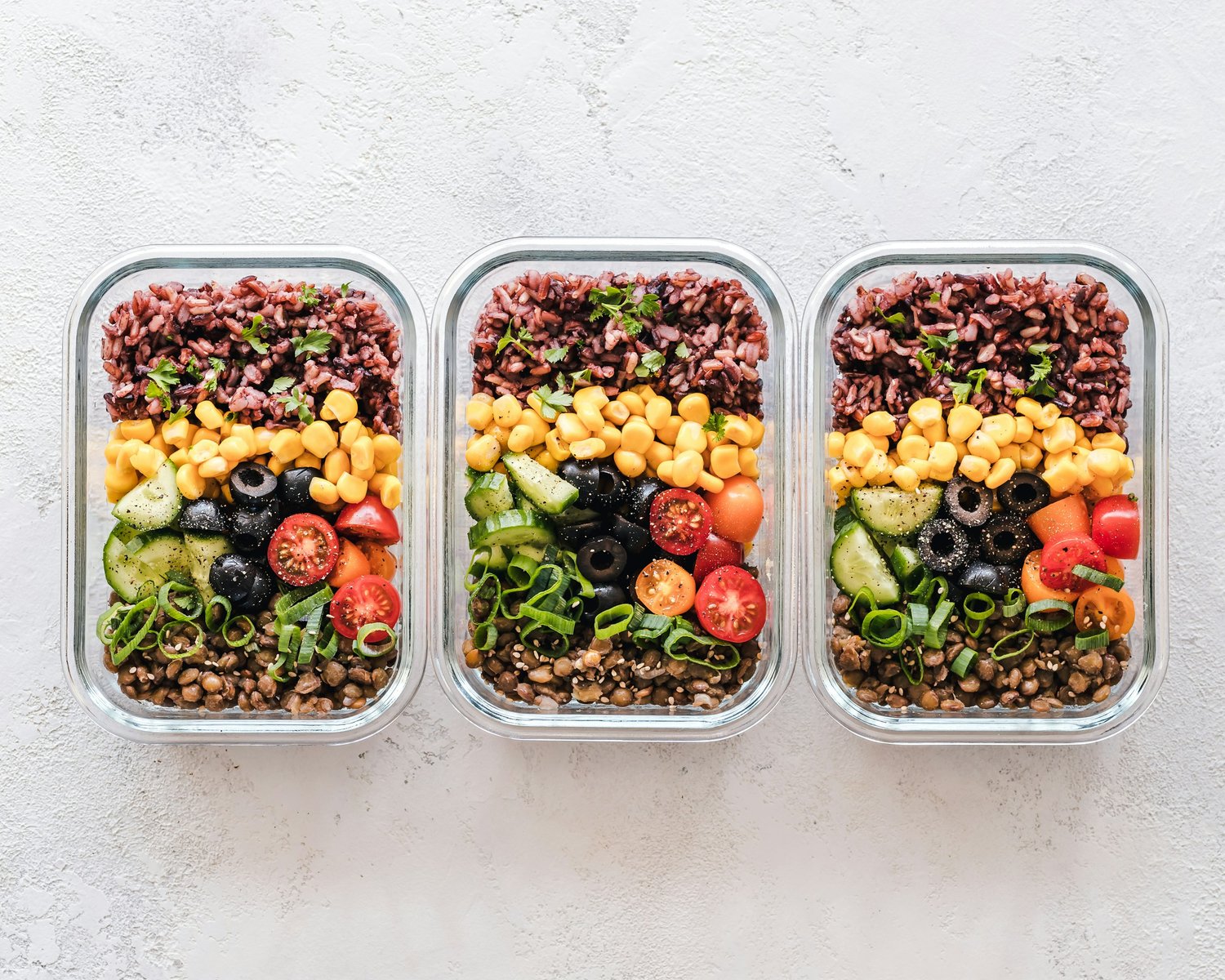
This Blog is based on Podcast Episode 55: Conquering the School Lunchbox.
As a Paediatric Dietician and mum of 2, I know first-hand the struggles that lunchboxes bring—especially those picky eaters who turn their noses up at anything green or “different.”
They often like the same “white lunch box” day in day out….and it can be damn hard to get them to eat any differently.
In this blog, I’ll share practical strategies from my recent podcast episode that will help you navigate the sometimes treacherous waters of school lunches for fussy eaters, so we can reduce the stress once and for all.
Understanding Picky Eating Behaviour
Before we dive into lunchbox solutions, it’s important to understand that fussy eating is a normal part of child development. Many children go through phases where they refuse certain foods or suddenly dislike something they previously enjoyed. This can be frustrating, but recognising it as a natural developmental stage can help reduce the tension around mealtimes.
For fussy eaters, school lunches present unique challenges. They’re eating in a different environment, often with time constraints, distractions, and social pressures. What works at home might not translate to the classroom or school canteen.
As a paediatric dietitian, I frequently remind parents that our goal isn’t to “fix” picky eating overnight, but rather to support our children in gradually expanding their food repertoire while maintaining a positive relationship with food.
Planning the Perfect Lunchbox for Fussy Eaters
Start with What They Already Like
The school lunchbox isn’t the place to introduce completely new foods. Include mostly food you know your child enjoys/will eat, and a few small pieces of “new foods” that you would like them to eat. This provides a “safe” option they can fall back on if they’re not feeling adventurous that day.
For fussy eaters, familiarity breeds comfort. You might gradually introduce variations of foods they already like. For example, if your child enjoys cheese sandwiches, you could:
-
Use different types of bread (still keeping the same filling initially). For example if they like white bread, you could add one piece of wholemeal (or change to wholemeal or grainy bread completely)
-
Change the shape (cut into triangles one day, squares another)
-
Add a small amount of new ingredient over time (a thin slice of cucumber or a smear of avocado)
Balance Nutrition and Acceptability
As a paediatric dietician, I’m always looking for the sweet spot between optimal nutrition and what children will actually eat. A nutritious lunch that returns home untouched serves no one.
Try to include foods from different food groups to create a balanced meal:
-
A source of protein (meat, eggs, legumes, edamame)
-
Healthy fat (tuna, avocado, olives)
-
Wholegrain carbohydrates for energy (bread, wraps, pasta, rice)
-
Fruits and vegetables (in whatever form your child will accept)
-
A calcium-rich food (yoghurt, cheese, fortified plant milk)
For picky eaters, you might need to get creative with how you incorporate nutrition. For instance, if your child refuses most vegetables, you could:
-
Add grated carrot or zucchini to muffins
-
Include homemade dips like hummus
-
Pack vegetable-based crackers or chips
-
Use vegetable-enriched pasta or bread
Quick and Easy Food Ideas That Work
As busy parents, we need practical solutions that don’t require hours in the kitchen. Some of my favourite quick and easy food options for school lunchboxes include:
Sandwich Alternatives:
-
Wraps or pita pockets with simple fillings
-
Homemade pizza scrolls (can be batch-cooked and frozen)
-
Pasta salad with small pieces of vegetable and protein
-
Baked Potatoes with cheese, corn, diced capsicum and spring onion
-
Zucchini slice, or mini quiche
-
Leftover pasta, curries or soup in a thermos
Protein-Rich Foods:
Fruit and Vegetables:
-
Cut fruit in manageable pieces
-
Vegetable sticks with dip
-
Fruit skewers for a fun presentation
-
Frozen peas or corn can be added to lunchboxes—they’ll thaw by lunchtime
Snack Items:
If you’re looking for more specific inspiration, Taste.com.au offers an excellent gallery of lunch box ideas specifically designed for fussy eaters, with visual examples that might appeal to your child.
The Psychology of the Lunchbox
For children, especially fussy eaters, the social aspect of lunch can be as important as the food itself. They notice what their peers are eating and may feel self-conscious if their lunch looks “different.”
Presentation Matters (But Not How You Think)
While social media might have you believing that elaborate bento box creations are essential, the reality is much simpler. What matters most is:
-
Food that’s easy to access (young children may struggle with tight containers or complicated packaging)
-
Appropriate portion sizes (overwhelming quantities can be off-putting)
-
Familiar presentation (similar to how you serve food at home)
-
Independence (can your child open everything without help?)
For fussy eaters, consistency and predictability often trump variety. If your child is comfortable with their lunch looking the same each day, that’s completely fine. Nutrition doesn’t have to come from a diverse range of foods all at once—it’s about balance over days and weeks.
Communication is Key
Talk to your children about their lunch experiences. Without pressure, ask questions like:
-
Was there enough time to eat?
-
Did you get hungry later in the day?
-
Was anything difficult to open or eat?
-
What did you enjoy most?
For older children, involving them in packing their own lunchbox can increase the likelihood they’ll eat what’s packed. This doesn’t mean giving them free rein over unhealthy choices, but rather guiding them to make balanced decisions within parameters you set.
Common Lunchbox Challenges for Fussy Eaters
Food Coming Home Untouched
This is perhaps the most frustrating experience for parents—preparing a nutritious lunchbox only to have it return home untouched. Before assuming it’s just fussy eating, consider:
-
Time constraints: Many schools allow limited time for eating. Quick-to-eat foods may be more practical.
-
Social distractions: Children might prioritise playtime or socialising over eating.
-
Temperature issues: Food that was appealing when packed might become less so after hours in a schoolbag.
-
Overwhelming quantities: Too much food can be intimidating for children.
As a paediatric dietitian working with fussy eaters, I suggest packing smaller amounts of food initially. Success is not measured by an empty lunchbox but by a child who feels comfortable and supported in their eating journey.
Dealing with Lunchbox Envy
Children often want what their friends have, especially when it comes to packaged treats or novelty items. Instead of strictly forbidding these items, consider:
-
Designating a place in the lunch box for a special treat
-
Creating homemade versions of popular snacks
-
Finding healthier alternatives to popular packaged foods. Check out my essential guide to choosing healthy kids supermarket snacks here
Practical Lunchbox Systems That Work
The Mix-and-Match Approach
One of the most effective systems for busy parents is the mix-and-match lunchbox. Here’s how it works:
-
Create a list of foods your child accepts from each food group
-
Each day, select one item from each category:
This system ensures nutritional balance while keeping lunchbox packing simple. It works especially well for fussy eaters who prefer predictability but still offers some variety within their comfort zone.
Batch Preparation
Setting aside time for batch preparation can significantly reduce daily stress:
-
Bake and freeze muffins, slices, or scrolls
-
Pre-portion crackers, dried fruit, or other snacks into containers
-
Wash and cut fruit and vegetables at the beginning of the week
-
Cook extra dinner portions for lunchbox leftovers
Having a freezer stash of emergency lunchbox items can be a lifesaver on busy mornings or when you’ve run out of fresh options.
Supporting Nutrition Beyond the Lunchbox
For parents of extremely fussy eaters, it’s important to remember that nutrition happens across the entire day—not just at lunchtime. If your child eats very little at school, focus on providing nutritious options at breakfast and dinner.
Breakfast Boost
A substantial breakfast can help sustain children through the school day, especially if they’re likely to eat minimally at lunch. Consider:
-
Protein-rich options like eggs, Greek yoghurt, or nut butters
-
Wholegrain cereals or toast for sustained energy
-
Fruit or vegetable additions where accepted
After-School Hunger
Many children, particularly fussy eaters, come home from school ravenous. Rather than seeing this as a problem, view it as an opportunity to provide nutrition:
-
Prepare a substantial after-school snack that includes protein
-
Use this hungry window to offer previously rejected foods
-
Create a relaxed environment where eating isn’t rushed
This pattern of eating is completely normal and working with it rather than against it can reduce mealtime stress.
When to Seek Professional Help
While fussy eating is common, there are situations where professional support may be beneficial:
-
Your child is losing weight or not growing as expected
-
Eating issues are causing significant family stress
-
Your child has sensory sensitivities that severely limit food choices
-
There’s extreme anxiety around new foods or eating situations
A paediatric dietitian can provide personalised strategies based on your child’s specific needs and eating patterns. To learn more about how Karina can help you in an online consultation click here.
Moving Forward with Confidence
Creating lunchboxes for fussy eaters doesn’t need to be a daily battle. By understanding your child’s specific needs, establishing practical systems, and maintaining a positive attitude toward food, you can support your child’s nutrition without the stress.
Remember these key points:
-
Consistency and familiarity are often more important than variety for fussy eaters
-
Quick, easy food options can be just as nutritious as elaborate preparations
-
Communication with your child about their lunchbox experiences is invaluable
-
Small, gradual changes are more effective than dramatic overhauls
-
The goal is progress, not perfection
I can assure you that most children gradually expand their food acceptance when supported with patience and understanding. The school lunchbox is just one part of your child’s nutritional journey—a journey that continues through childhood and beyond.
By focusing on creating positive food experiences rather than forcing specific foods, you’re laying the groundwork for a healthy relationship with eating that will serve your child throughout their life.
!function(f,b,e,v,n,t,s)
{if(f.fbq)return;n=f.fbq=function(){n.callMethod?
n.callMethod.apply(n,arguments):n.queue.push(arguments)};
if(!f._fbq)f._fbq=n;n.push=n;n.loaded=!0;n.version=’2.0′;
n.queue=[];t=b.createElement(e);t.async=!0;
t.src=v;s=b.getElementsByTagName(e)[0];
s.parentNode.insertBefore(t,s)}(window, document,’script’,
‘https://connect.facebook.net/en_US/fbevents.js’);
fbq(‘init’, ‘480258159402054’);
fbq(‘track’, ‘PageView’);
!function(f,b,e,v,n,t,s){if(f.fbq)return;n=f.fbq=function(){n.callMethod?n.callMethod.apply(n,arguments):n.queue.push(arguments)};if(!f._fbq)f._fbq=n;n.push=n;n.loaded=!0;n.version=’2.0′;n.agent=”plsquarespace”;n.queue=[];t=b.createElement(e);t.async=!0;t.src=v;s=b.getElementsByTagName(e)[0];s.parentNode.insertBefore(t,s)}(window,document,’script’,’https://connect.facebook.net/en_US/fbevents.js’);fbq(‘init’, ‘170922632097878’);fbq(‘track’, “PageView”);
Source link






